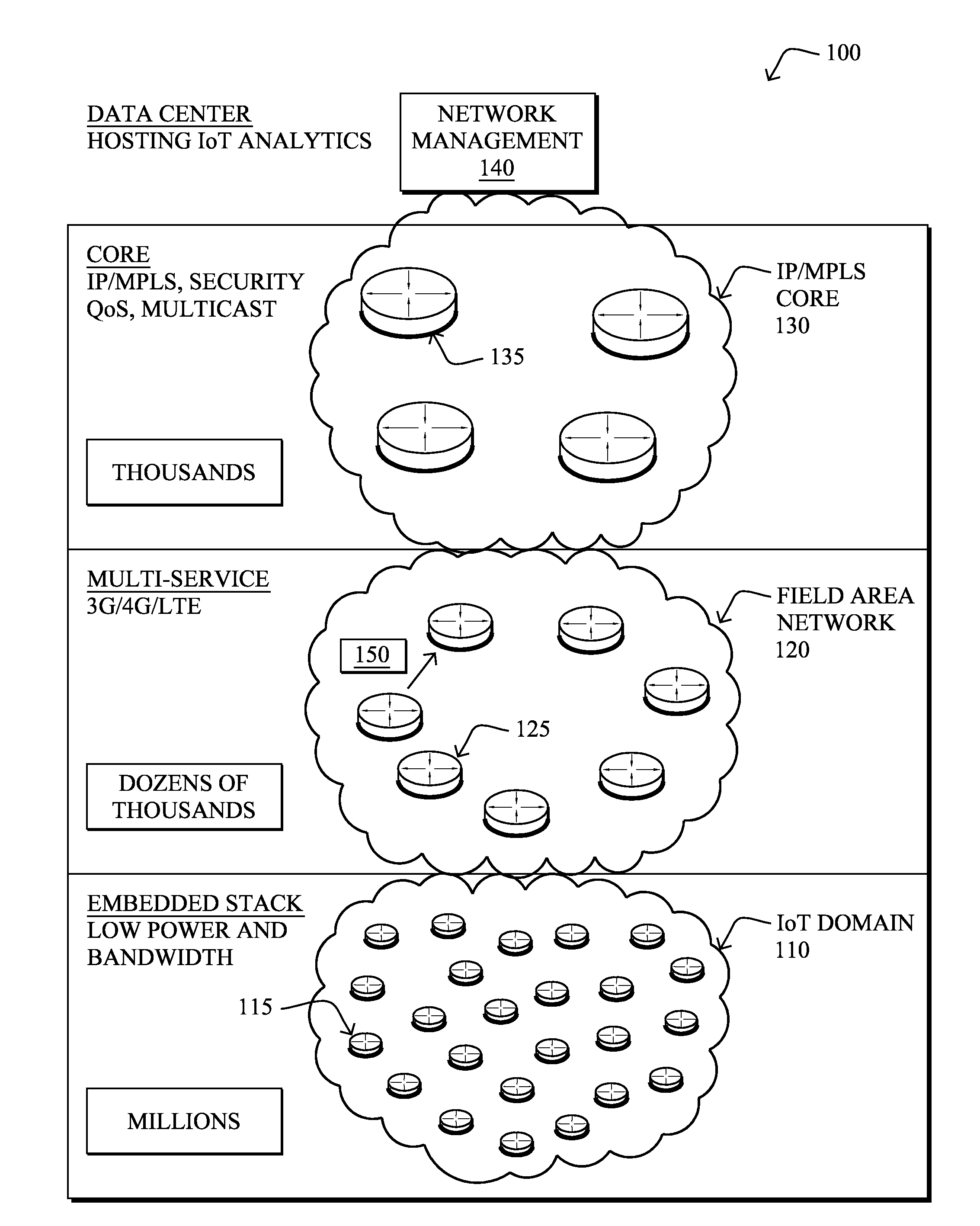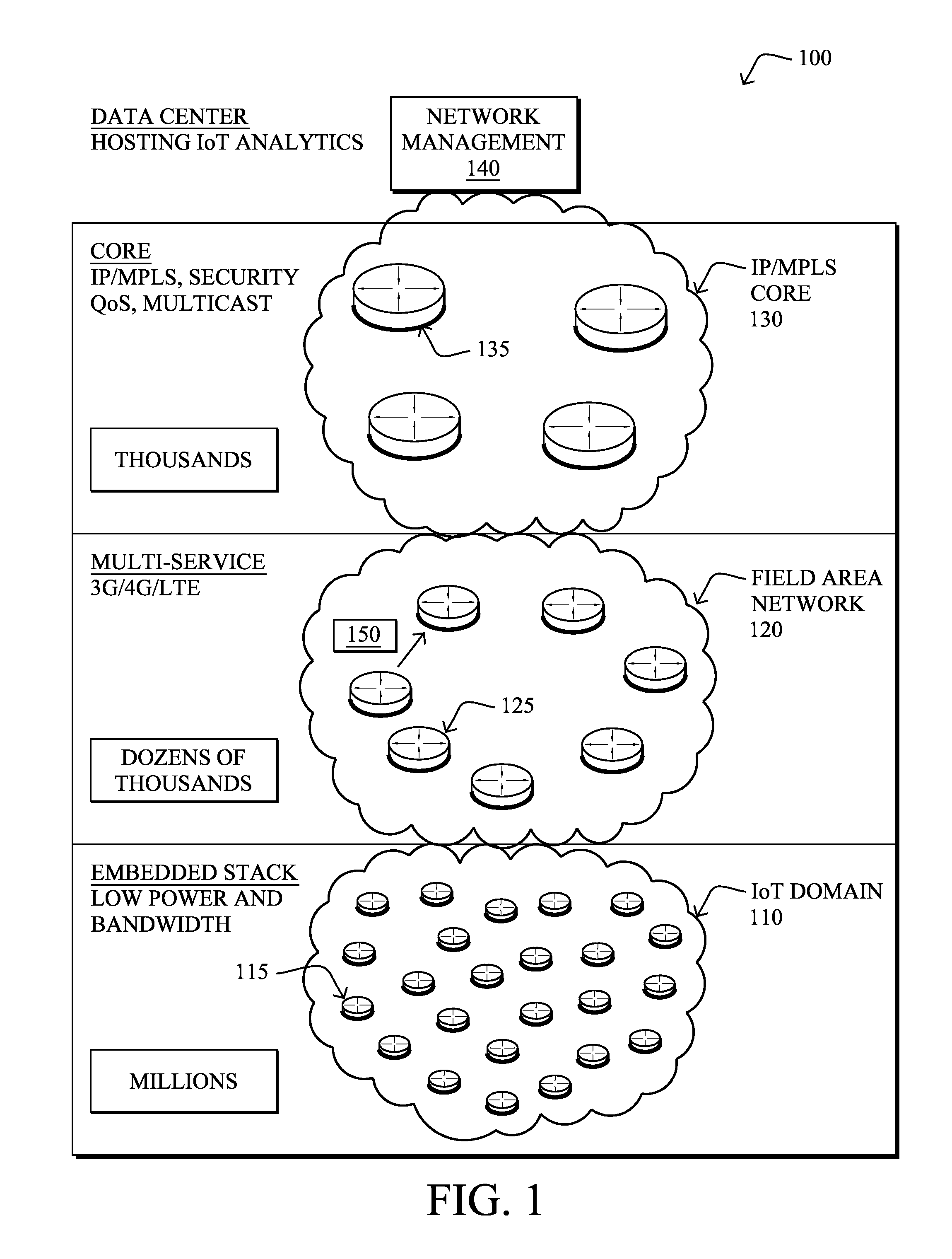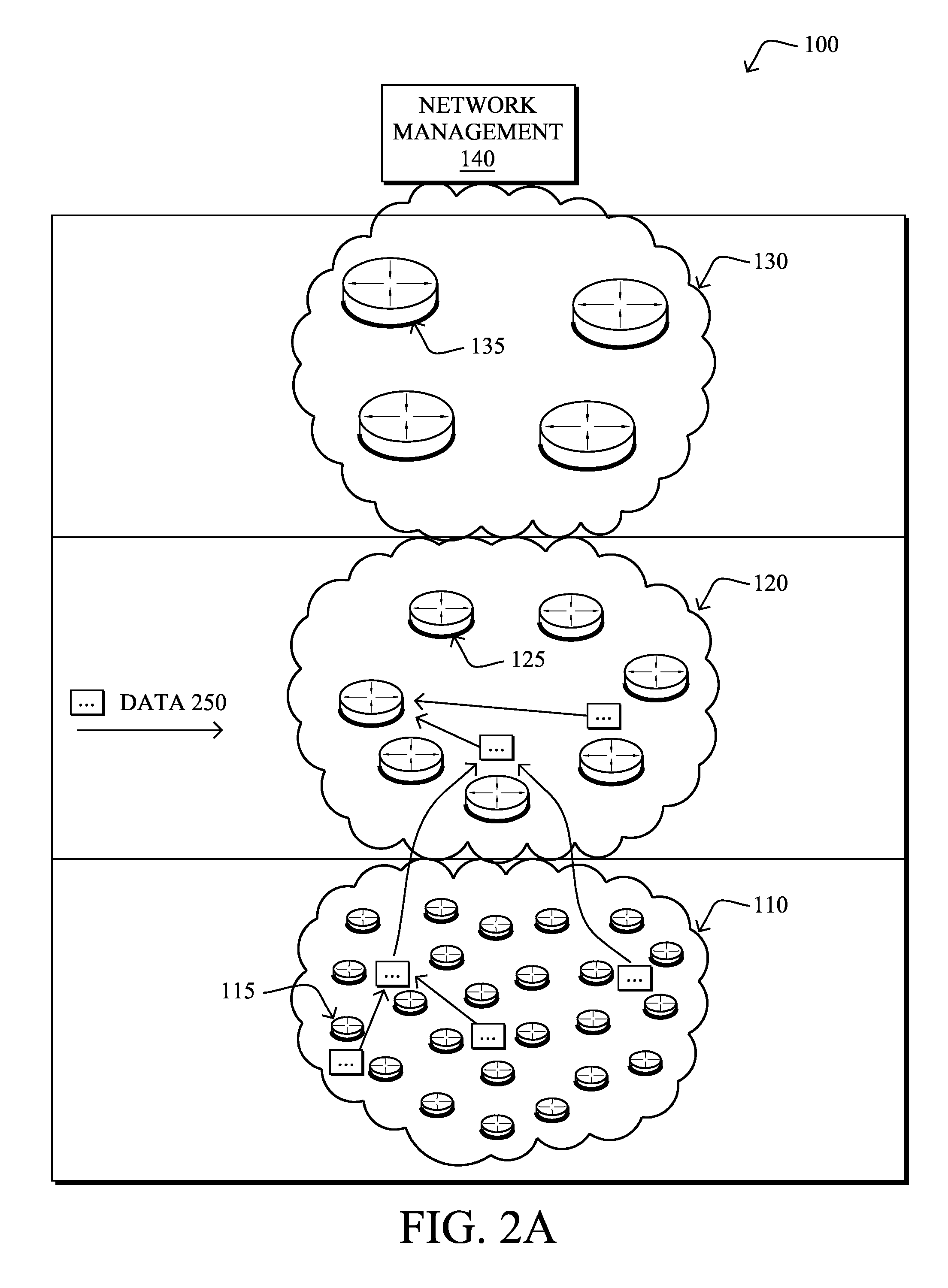Assisted intelligent routing for minimalistic connected object networks
a connected object and intelligent routing technology, applied in the field of computer networks, can solve the problems of difficult operation in a network restricted environment, and the complexity inherent to the challenges of routing in lln using a distributed routing approach, and achieve the effect of reducing the complexity of the challenge of routing
- Summary
- Abstract
- Description
- Claims
- Application Information
AI Technical Summary
Benefits of technology
Problems solved by technology
Method used
Image
Examples
Embodiment Construction
Overview
[0019]According to one or more embodiments of the disclosure, a distributed intelligence agent (DIA) collects local state information from a plurality of minimalistic connected objects (MCOs) in a computer network, the local state information for each MCO comprising a corresponding neighbor list and a selected next-hop for the respective MCO, where one or more of the MCOs are configured to select their next-hop without any self-optimization. The DIA may then analyze a current routing topology, which is the combined result of the selected next-hops, in comparison to a computed optimal routing topology to determine whether to optimize the current routing topology. In response to determining that the current routing topology should be optimized, the DIA may transmit a unicast routing instruction to one or more individual MCOs to instruct those individual MCOs how to optimize the current routing topology, accordingly.
DESCRIPTION
[0020]A computer network is a geographically distri...
PUM
 Login to View More
Login to View More Abstract
Description
Claims
Application Information
 Login to View More
Login to View More - R&D
- Intellectual Property
- Life Sciences
- Materials
- Tech Scout
- Unparalleled Data Quality
- Higher Quality Content
- 60% Fewer Hallucinations
Browse by: Latest US Patents, China's latest patents, Technical Efficacy Thesaurus, Application Domain, Technology Topic, Popular Technical Reports.
© 2025 PatSnap. All rights reserved.Legal|Privacy policy|Modern Slavery Act Transparency Statement|Sitemap|About US| Contact US: help@patsnap.com



